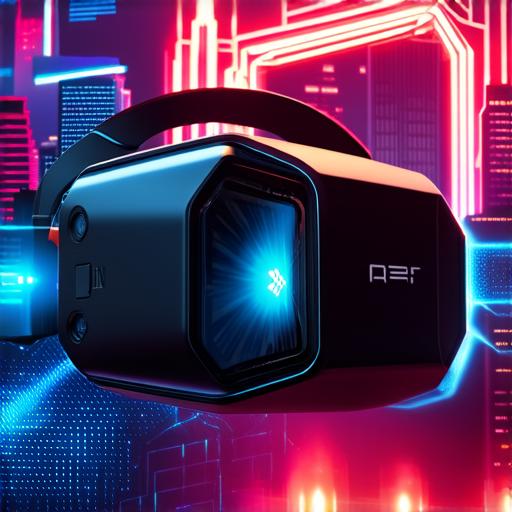What is Augmented Reality?
Augmented reality (AR) is a technology that overlays digital content onto the real world. It enhances or “augments” our perception of the physical environment by adding digital elements such as graphics, animations, and information to our view. AR applications can be accessed through smartphones, tablets, and specialized devices like smart glasses.
Examples of Augmented Reality Applications
-
Pokémon Go: One of the most popular AR apps, Pokémon Go allows users to capture and train virtual creatures in real-world environments. The app uses a combination of GPS, cameras, and sensors to create an immersive gaming experience that encourages exploration and social interaction.
-
IKEA Place: This AR app lets users visualize how furniture would look in their homes before buying it. Users can see how different pieces fit into the space and make changes to the placement and color of items to better suit their tastes.
-
Snapchat Filters: The popular social media platform uses AR filters to add fun effects to photos and videos. These filters can transform a user’s face or add digital elements to an image, making it more engaging and shareable.
-
Google Translate: This AR app allows users to translate text in real-time by simply pointing their phone at it. The app uses machine learning and computer vision to accurately translate words and phrases, making it a useful tool for travelers and language learners.
-
Aurasma: This AR app allows users to create interactive experiences using markers placed in the real world. Users can trigger animations, videos, and other digital content when they scan a marker with their phone’s camera.

What is Virtual Reality?
Virtual reality (VR) is a technology that creates a completely immersive digital environment. It uses sensors and headsets to track movement and create a sense of presence in a simulated world. VR applications can be accessed through dedicated gaming consoles, computers, and specialized VR headsets like the Oculus Quest.
Examples of Virtual Reality Applications
-
Gaming: VR has revolutionized the gaming industry by allowing players to fully immerse themselves in a game’s world. Games like “Beat Saber” and “Resident Evil 7” use VR headsets to create a sense of presence and immersion that traditional games cannot match.
-
Training and Simulation: Many industries, including healthcare, aviation, and military, use VR for training purposes. These simulations allow users to practice skills in a safe and controlled environment without the risk of injury or damage.
-
Architecture and Interior Design: VR has become an essential tool for architects and interior designers. It allows them to visualize and test designs in a virtual space, making it easier to make changes and adjustments before construction begins.
-
Education: VR can be used to create immersive educational experiences that are more engaging and interactive than traditional classroom settings. Applications like “Google Expeditions” allow users to virtually explore museums, historical sites, and other locations around the world.
-
Therapy: VR has also been used in therapy to treat conditions such as PTSD, phobias, and anxiety disorders. By creating simulations of triggering situations, therapists can help patients overcome their fears in a safe and controlled environment.
Differences between Augmented Reality and Virtual Reality
While both AR and VR use digital content to enhance our perception of the physical world, there are some key differences between the two technologies:
-
Immersion: VR creates a completely immersive environment that blocks out the real world, while AR overlays digital content onto the real world. This means that VR users can feel like they are in a different world, while AR users can still see and interact with their physical surroundings.
-
Interactivity: Both AR and VR allow for some level of interaction with digital content, but VR typically offers more interactive experiences due to its immersive nature.
-
Accessibility: VR requires specialized equipment like headsets and gaming consoles, while AR can be accessed through smartphones and tablets. This means that VR is less accessible than AR, especially to those who may not have access to the latest technology.
-
Cost: VR applications can be more expensive to develop and implement than AR applications, due to the need for specialized equipment and software.
The Future of Augmented Reality and Virtual Reality
AR and VR are rapidly evolving technologies that have the potential to transform many industries. As technology continues to advance, we can expect to see even more immersive and interactive experiences in the future.
Conclusion
Augmented reality (AR) and virtual reality (VR) are rapidly changing the way we interact with technology and the world around us. By overlaysing digital content onto the real world or creating a completely immersive digital environment, AR and VR offer unique and exciting experiences that have the potential to transform many industries. As technology continues to advance, we can expect to see even more innovative and immersive applications in the future.
